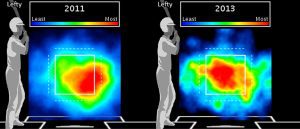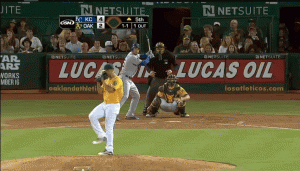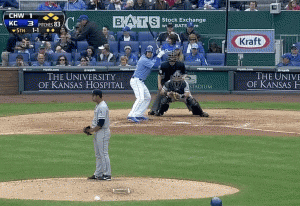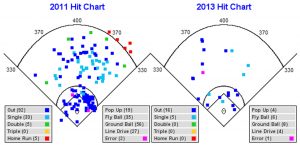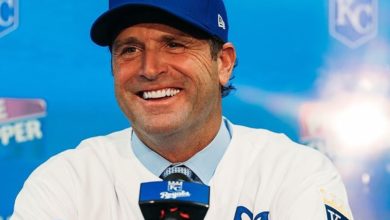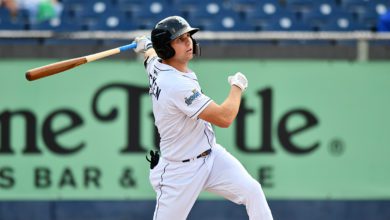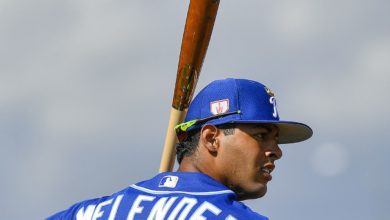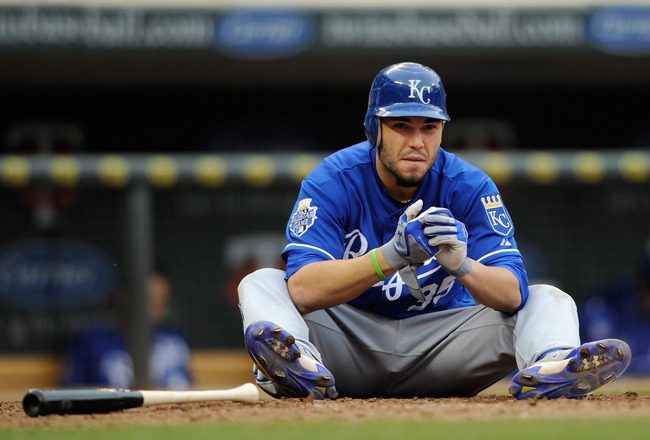

It’s 9:13 AM PDT Tuesday morning, and I’m staring at my 22.22 Oz1 Oakland Athletics 2012 AL West Champions mug attempting to think of a topic to write about for my debut article. I acquired the mug from a proprietor with a blue and white ice cooler, which was full of uniquely adorned A’s mugs all of the same size, for $10 as I tailgated at the O.co Coliseum before game three of the ALDS. It’s only been seven months and the lettering is still intact and shows no sign of depreciation.2 I tend to ramble and get off track a lot. Rambling is a technique I learned in freshman year creative writing or from the movie Finding Forrester.3 Either way, it helps get the creative juices flowing.
It just occurred to me, what can be better than fantasy heartbreak? Specifically, when fantasy owners draft a player with high expectations, but the player drastically falls short of those expectations. Every fantasy player experiences heartbreak with at least one player every year. In fact, if you play fantasy baseball long enough, you come to expect it – like someone coughing on your right hand as you ride the Muni N Train home.
Last year, Eric Hosmer broke my heart. However, that didn’t stop me from believing in him again. I targeted and drafted him in all four of my NFBC Leagues.4 There wasn’t a bigger believer in Hosmer’s fantasy value entering this season than me. I legitimized my love by citing many reasons why he performed so poorly (in 2012) and how this was the year he was going to turn it around.
“Making adjustments at the major-league level is difficult, especially at the age of 22.” “There’s no way he’s going to have .255 BABIP again.” “His approach has become more refined; his walk rate went from 6.0 percent in his rookie season to 9.4 percent in 2012.” “He’ll revert back to the swing mechanics he had during his rookie year.” “At the time of his call-up, Kevin Goldstein said, ‘Hosmer is arguably the best hitting prospect at the upper levels (in the minors).’ Therefore, Hosmer has all the tools necessary to have a great rebound season.” These are some of the statements I made to myself about his fantasy value and everything pointed to a breakout season.
We’re one month into the season and, suffice to say, I’m not giving up on Hosmer, but I do have one foot out the door. I’ll begin with the statistical analysis first. All the caveats about a small sample size apply. His slash line, in 101 plate appearances, is .258/.337/.326. That’s not a misprint; he actually has a .326 slugging with zero home runs. His strikeout rate, 20 percent, is four percentage points higher than last year. The most troubling stat is he’s continuing to hit a lot of ground balls. According to FanGraphs, he’s hitting a ground ball 52.1 percent of the time; last year it was 53.6 percent. Players with 50 percent ground ball rates are usually reserved for contact hitters such as Elvis Andrus and Howie Kendrick.
The biggest difference this year is how he’s being pitched to. In 2011, he saw a lot of pitches away in the strike zone, but this year, he’s being pitched more on the inner half of the zone. The heat map below shows the difference in pitch frequency between 2011 and this year. Image courtesy of TruMedia Networks.
There’s a good reason why pitchers have made the adjustment to pitch inside. The table below illustrates the increase pitch frequency on the inner half of the plate as well as his increasing inability to hit for power when he’s pitched on the inner half.
|
Year |
Outer Half Pitch Percentage |
Slugging |
Inner Half Pitch Percentage |
Slugging |
|
2011 |
52.1% |
.422 |
27.3% |
.406 |
|
2012 |
51.3% |
.331 |
27.9% |
.340 |
|
2013 |
42.0% |
.500 |
33.4% |
.154 |
Since his slugging percentage on pitches on the inner half has been in decline, something must be afoot.
Hosmer 2011
Hosmer 2013
There are two noticeable differences in his swing. The first is his hands are noticeably higher while in the hitting position or “load” position. The second is his baseball timing is off. Specifically, he’s not getting the bat head in the zone in time to make solid contact. In 2011, the bat hit the ball earlier in the strike zone, creating more solid contact, while this year, his bat is making contact deeper in the zone, creating more weak contact to left field.
Ideally, a hitter wants his feet and body to face the pitcher at the conclusion of the stride. Compare and contrast where his front foot is at the time of contact. In 2011 he was driving his hips through the zone and making solid contact while this year he’s flailing at the ball. The hit charts below show where he’s hitting the ball on pitches in the inner half of the plate in 2011 and 2013. Image courtesy of TruMedia Networks.
Hitting is very rhythmic and timing based. It appears as though Hosmer’s swing and baseball time are out of sorts. He’s striking out more often and making weaker contact on pitches on the inner half. Hosmer has the tools necessary to be an elite player, but a high ceiling doesn’t necessarily guarantee success. In 2007, Baseball America ranked Delmon Young as their third best prospect and look how his career turned out (so far). With average draft positions (ADPs) of 114 and 95.5 in ESPN and NFBC respectively, fantasy owners should not drop him because at any point he can start to actualize his tools and revert back to the player we saw in his rookie year. However, I’ve benched him in two of my leagues 5 because you can be patient up to a certain point and I don’t see the adjustments coming any time soon.
_____________________
1. I have no idea how much liquid it actually holds but I’d like to think it has palindromic qualities.
2. Always hand wash your dishes.
3. I bet you just said, “You’re the man now, dog!”
4. This is my first year playing in four leagues and it’s extremely time consuming; I’m only 1-3 from now on.
5. Nolan Arenado is starting in my corner infield position.


